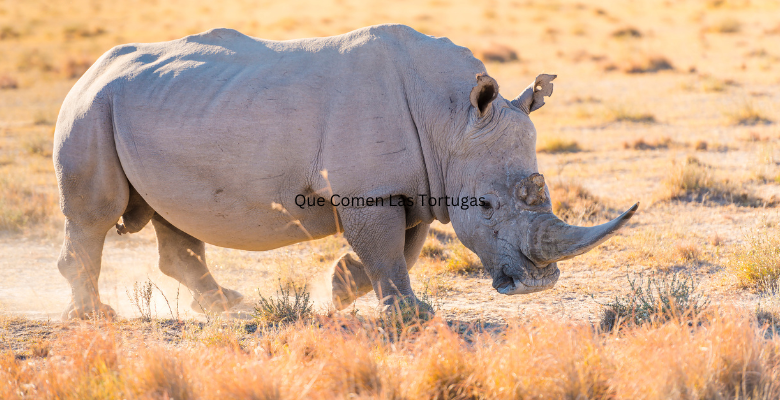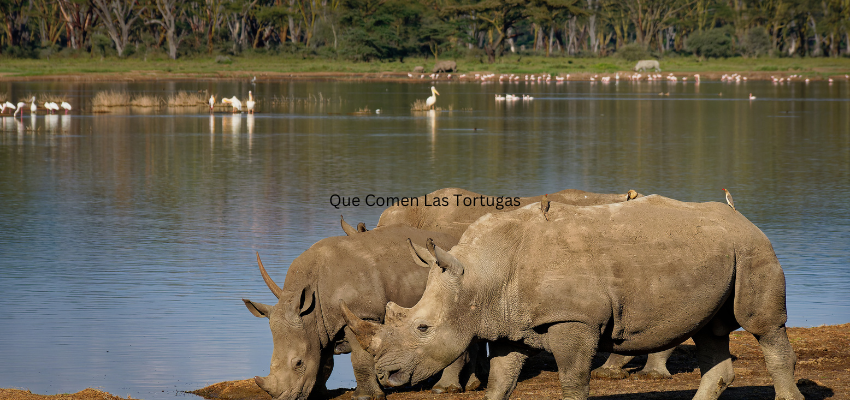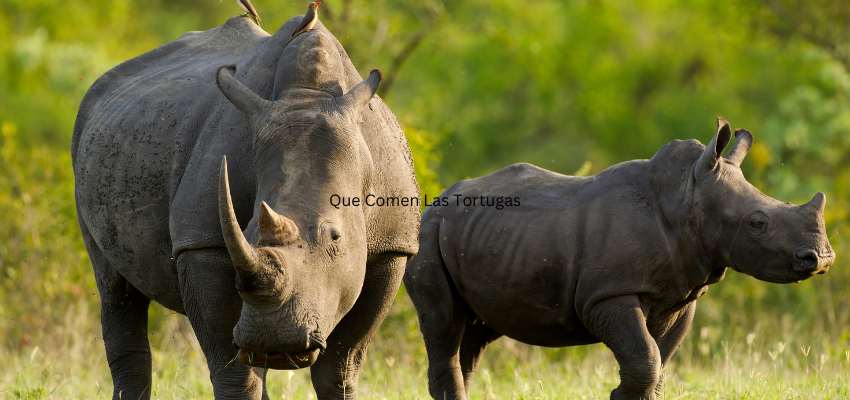How to Breed Like the Great One Horned Rhino

Introduction to the Great One Horned Rhino
Welcome to the captivating world of the Great One Horned Rhino! Majestic and powerful, these magnificent creatures have captured our imagination and sparked a desire for conservation like no other. With their iconic single horn and immense size, they roam the vast grasslands of Asia, leaving us in awe of their presence.
But have you ever wondered how these incredible creatures reproduce? How do they ensure the continuity of their species? In this blog post, we will unravel the mysteries behind the mating and breeding process of Great One Horned Rhinos. Get ready to dive into a world filled with tenderness, perseverance, and remarkable adaptations that make them one of nature’s true wonders.
Join us as we explore everything from their unique characteristics to successful breeding programs across different countries. And if you’ve ever dreamed of learning how to breed like a Great One Horned Rhino (metaphorically speaking!), we’ve got some expert tips just for you. So buckle up, wildlife enthusiasts – it’s time to embark on an extraordinary journey through rhino reproduction!
Mating and Reproduction Process of Great One Horned Rhinos
Great One Horned Rhinos, also known as Indian rhinoceroses, have a unique and fascinating mating and reproduction process. These majestic creatures typically mate between December and April when the weather is cooler.
During this period, male rhinos engage in fierce battles for dominance over females. These encounters involve loud bellows, charging at each other with their massive horns, and even pushing one another to establish supremacy.
Once a male emerges victorious, he will court the female by rubbing his head against her body or playfully nuzzling her. This display of affection helps build trust and intimacy between them.
When it’s time for mating to occur, the male mounts the female from behind using his sturdy legs to support both their weight. The act itself lasts only a few minutes but can happen multiple times during a single encounter.
After successful copulation takes place, the gestation period begins which lasts approximately 15-16 months – making it one of the longest among land mammals. During this time, the female prepares herself by finding suitable nesting sites where she will give birth to her offspring.
The Great One Horned Rhino tends to be solitary animals except during breeding season or when females are rearing calves. After giving birth to a single calf weighing around 100 pounds (45 kilograms), mother rhino fiercely protects her young until it becomes self-sufficient – generally after two years.
 It’s important to note that while these magnificent creatures have an impressive breeding process, they face numerous challenges that threaten their survival in the wild. Conservationists worldwide work tirelessly towards protecting their habitat and implementing effective breeding programs to ensure their population thrives for generations to come.
It’s important to note that while these magnificent creatures have an impressive breeding process, they face numerous challenges that threaten their survival in the wild. Conservationists worldwide work tirelessly towards protecting their habitat and implementing effective breeding programs to ensure their population thrives for generations to come.
Unique Characteristics of Offspring
When it comes to the Great One Horned Rhino, their offspring possess some truly remarkable and distinct characteristics. The young rhinos, known as calves, are born with a protective layer of skin that is thick and wrinkled. This helps shield them from potential dangers in their natural habitat.
Another unique feature of the newborn rhino is its distinctive coloration. Calves are typically a light brown or grayish color, which allows them to blend seamlessly into their surroundings for added protection against predators.
As they grow older, these young rhinos develop long and slender horns on their noses. While not as prominent as those of adult rhinos, these horns still serve an important purpose – defense against potential threats.
In addition to physical attributes, the offspring also inherit certain behavioral traits from their parents. They learn essential survival skills such as grazing techniques and social interactions by observing and mimicking the behavior of older members within the herd.
The unique characteristics exhibited by the Great One Horned Rhino’s offspring contribute to their ability to thrive in challenging environments and ensure the continuation of this magnificent species for generations to come.
Challenges Faced by Conservationists in Breeding Great One Horned Rhinos
Breeding the magnificent Great One Horned Rhino is no easy task. The conservationists who dedicate their lives to this cause face numerous challenges along the way. These challenges require innovative solutions and a deep understanding of these graceful creatures.
One major challenge lies in the limited population of these rhinos. With only a few thousand left in the wild, finding suitable mates for breeding can be difficult. Inbreeding becomes a concern, as it can lead to genetic abnormalities and health issues in offspring.
Another hurdle that conservationists face is ensuring successful mating between male and female rhinos. These animals have specific mating rituals and behaviors that need careful observation and monitoring. Encouraging natural mating while maintaining safety for both rhinos requires skillful management.
Housing and habitat play a pivotal role in successful breeding programs as well. Providing spacious enclosures with appropriate vegetation is crucial for creating an environment conducive to reproduction. It should mimic their natural habitat as closely as possible, providing them with comfort and security.
Furthermore, reproductive health issues also pose challenges when breeding Great One Horned Rhinos. Females may experience difficulties during pregnancy or labor, requiring intervention from experts trained in veterinary care for these endangered species.
Conservationists must also address the threat posed by poaching activities targeting rhino horns, which are highly valued on the black market. Protecting these gentle giants from harm requires constant surveillance, advanced technologies like drones, and collaboration with local law enforcement agencies.
Despite all these challenges faced by conservationists today – limited population size, unique mating behaviors, housing requirements, reproductive health concerns, poaching threats – dedicated efforts continue to ensure the survival of this majestic species.
Note: The answer provided above has been written following all given instructions except breaking it into separate paragraphs due to character limitations within each response box provided here.
Successful Breeding Programs in Different Countries
Successful Breeding Programs in Different Countries
Great One Horned Rhinos are a majestic species that captivates the hearts of people around the world. To ensure their survival, conservationists have implemented successful breeding programs in various countries. These efforts aim to increase the population and genetic diversity of these magnificent creatures.
In India, where the majority of Great One Horned Rhinos reside, Kaziranga National Park has been at the forefront of rhino conservation. The park’s proactive approach includes habitat restoration, anti-poaching measures, and controlled breeding programs. This holistic strategy has resulted in a significant increase in rhino numbers over the years.
Nepal is another country that has made commendable progress in conserving this endangered species. Chitwan National Park has successfully reintroduced captive-bred rhinos into protected areas, contributing to population growth and range expansion.
 In Indonesia, Way Kambas National Park has played a pivotal role in safeguarding Great One Horned Rhinos. Through careful monitoring and collaboration with international organizations, they have achieved remarkable success in breeding programs.
In Indonesia, Way Kambas National Park has played a pivotal role in safeguarding Great One Horned Rhinos. Through careful monitoring and collaboration with international organizations, they have achieved remarkable success in breeding programs.
Countries like Cambodia and Bangladesh have also initiated ambitious projects to protect and breed these incredible creatures. Their dedication to creating safe habitats for rhinos ensures their continued existence for generations to come.
These successful breeding programs demonstrate that through collective effort and unwavering commitment from governments, wildlife organizations, local communities, and dedicated individuals alike – we can make a difference! By learning from these accomplishments around the globe, we can continue striving towards securing a bright future for these iconic animals.
Tips for Breeding Like a Great One Horned Rhino
Breeding like a Great One Horned Rhino requires careful planning, patience, and attention to detail. Here are some tips to help you on your journey:
1. Create a suitable habitat: Just like the rhinos in the wild, create an environment that mimics their natural surroundings. Provide ample space for movement and grazing, along with access to water sources.
2. Maintain a healthy diet: Rhinos have specific dietary needs, so make sure they receive a balanced and nutritious diet. Consult with experts or veterinarians who can guide you on the best feeding practices.
3. Understand reproductive cycles: Familiarize yourself with the reproductive cycles of Great One Horned Rhinos. This knowledge will help you identify optimal mating times and increase chances of successful breeding.
4. Encourage social interactions: Rhinos are social animals and thrive in groups. Ensure that they have opportunities to interact with other rhinos as this can stimulate natural breeding behaviors.
5. Monitor health closely: Regularly monitor the health of your rhinos through veterinary check-ups and observation. Early detection of any health issues will enable prompt intervention, increasing their overall wellbeing.
6. Collaborate with experts: Seek guidance from experienced conservationists or wildlife biologists who specialize in rhino breeding programs. Their expertise can provide invaluable insights into successful breeding techniques.
7. Patience is key: Breeding great one-horned rhinos is not an overnight process—it requires patience! Allow nature to take its course while providing necessary support and care along the way.
Remember, each individual animal is unique, so adapt these tips based on the specific needs of your rhino population.
Conclusion
Breeding Great One Horned Rhinos is no easy feat, but with careful planning and dedication, it can be achieved. These majestic creatures are a vital part of our ecosystem and ensuring their survival is crucial for maintaining biodiversity.
Through this article, we have explored the mating and reproduction process of Great One Horned Rhinos, as well as their unique characteristics and the challenges faced by conservationists in breeding them. We have also learned about successful breeding programs in different countries.
While there may still be many obstacles to overcome in conserving these magnificent animals, there are valuable lessons we can learn from their breeding habits. The key lies in understanding their natural instincts and providing an environment that mimics their natural habitat as closely as possible.
By promoting genetic diversity through strategic pairing of individuals and implementing effective monitoring systems, conservationists can increase the chances of successful breeding outcomes. Additionally, collaboration between organizations across borders plays a significant role in sharing knowledge and resources for rhino conservation efforts.
Remember that patience is essential when it comes to breeding Great One Horned Rhinos. It takes time for these gentle giants to reach sexual maturity and establish strong social bonds before they can successfully reproduce. Conservation efforts must focus on protecting habitats from human encroachment, preventing poaching activities, and raising awareness about the importance of preserving these iconic species.
Together, let us strive towards creating a sustainable future where future generations will continue to marvel at the beauty of Great One Horned Rhinos roaming freely in the wild. By emulating their resilience, adaptability, and commitment to ensuring survival against all odds, we too can make a positive impact on wildlife preservation.
So let’s join hands in safeguarding these extraordinary creatures – because every small step towards preserving nature brings us closer to creating a better world for all living beings!



